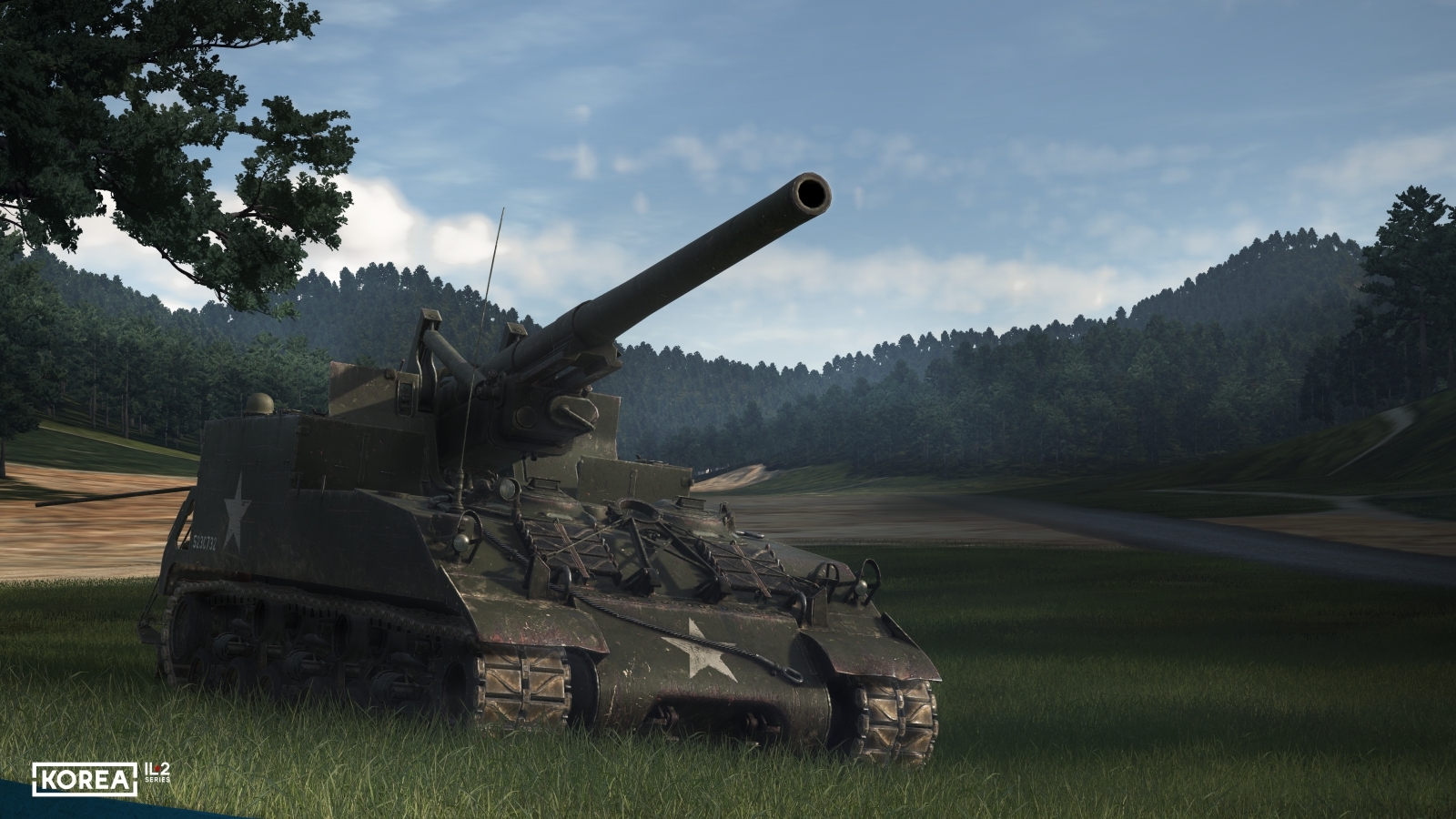Dev Blog #33
Comrades! Greetings!
Today, we will discuss the primary offensive weapon in modern warfare. The weapon that makes the earth tremble: Tanks! Tanks in Korea: Il-2 Series.
The Korean War was characterized by the actions of tank units on both sides. The best examples of Western and Soviet tank design from the end of World War II clashed in this conflict. Although it would seem that the 1950s had already begun, on the battlefields we see T-34−85s, IS-2s, and Shermans. There was also a more modern tank from the late 1940s: the American heavy M46 Patton. Although books classify it as a "medium tank," it can really be classified as "heavy." It has a combat weight of 44 tons, 100 mm thick frontal armor at a 40° angle, a 90 mm gun derived from an anti-aircraft gun in the tradition of German tank design, and a speed of less than 50 km/h.
Today, we will discuss the primary offensive weapon in modern warfare. The weapon that makes the earth tremble: Tanks! Tanks in Korea: Il-2 Series.
The Korean War was characterized by the actions of tank units on both sides. The best examples of Western and Soviet tank design from the end of World War II clashed in this conflict. Although it would seem that the 1950s had already begun, on the battlefields we see T-34−85s, IS-2s, and Shermans. There was also a more modern tank from the late 1940s: the American heavy M46 Patton. Although books classify it as a "medium tank," it can really be classified as "heavy." It has a combat weight of 44 tons, 100 mm thick frontal armor at a 40° angle, a 90 mm gun derived from an anti-aircraft gun in the tradition of German tank design, and a speed of less than 50 km/h.
The "blue" side was quite confident, even painting their tanks in bright, unique "liveries" depicting predatory animals, disregarding the rules of camouflage. Perhaps these unit commanders considered intimidation to be more important. This was seen not only on Pattons but also on Shermans, which are featured in our game in the M4A3E8 modification, most characteristic of the Korean War. Dating from 1944, this tank has a welded hull and is armed with a 76 mm long-barreled gun. Throughout their history, Shermans had a variety of power plants, including diesel and aircraft engines. However, this one was equipped with the classic American Ford GAA V8 gasoline engine, which allowed it to reach a maximum speed of 42 km/h on roads.
Continuing with the theme of armored vehicles on the "blue" side, it would be remiss not to mention self-propelled guns. In our simulation, these are represented by the M7B1 Priest (medium) and the M40 Gun Motor Carriage (heavy). Interestingly, both are based on the Sherman tank chassis. The M7B1 is armed with a 105 mm M2A1 howitzer, which will also be available in a towed version in the sim (see Dev Blog #21). The M40 is armed with a 155 mm Long Tom, which is also available in the game in a towed form.
Turning to the equipment of the "red" side, it’s worth noting that during the war on the Korean Peninsula, it was used by North Korean troops and Chinese volunteer units. The Koreans were armed with the classic T-34−85 medium tank, one of the main heroes of World War II. Armed with a long-barreled 85 mm gun and possessing outstanding mobility, this tank remained relevant on the battlefield eight years after its debut. Like the T-34−85, the IS-2 heavy tank appeared at the end of 1943 as the Soviet tank industry’s response to the challenge posed by the Wehrmacht’s new big cats near Kursk. Weighing 46 tons, armed with a 122 mm rifled gun and 120 mm frontal armor at a 60° angle, the "Joseph Stalin Model 2" was the most formidable hammer of war.
The "red" side’s self-propelled guns consist of the light SU-76M and the heavy ISU-122. The SU-76M, based on the light T-70 tank and the popular ZIS-3 76 mm divisional gun, was the workhorse of the Great Patriotic War. It was mobile, low-profile, and inexpensive — an effective mass weapon of war. The ISU-122, based on the IS-2 tank, was a more specialized weapon. It was a heavy self-propelled anti-tank gun. Although it was armed with a 122 mm gun similar to the IS-2's, its installation in a more spacious combat compartment allowed it to achieve a rate of fire two to three times higher. IS-2 tanks and ISU-122 self-propelled guns were in service with the Chinese Army. While there is no direct evidence of their participation in battles on the Korean Peninsula, there is indirect information suggesting they took part in these events to some extent.
Additionally, we would like to draw your attention to the level of detail of the AI-controlled vehicles in the new project. As you can see from the screenshots, their visual quality is quite comparable to that of the player-controlled tanks in the Tank Crew: Clash at Prokhorovka project. This is impressive considering the AI-controlled tanks in "Korea" have 2.5 times fewer polys and a 4x lower texture budget, enabling their use on a massive scale. Maintaining quality with such reductions in polygons and pixels was only possible through new graphics technologies and new, state-of-the-art approaches to creating object models. Interestingly, despite the significant increase in the visual quality of AI-controlled ground vehicles, production times have not increased substantially and are comparable to those in Battle of Stalingrad—again, a result of new technologies and approaches. What would previously have required an overwhelming amount of time and resources, or been completely unfeasible, is now possible. This is a consequence of technological progress and evolution, and it is the path that our team has been striving to follow since the beginning of the Korea: Il-2 Series project.
In the future, we will reveal more of our methods.
In other news, we have registered the official IL2 Series subreddit — you’re welcome to join us at r/IL2Series, where we will be posting our news and updates.
Stay tuned and stay in touch!
In the future, we will reveal more of our methods.
In other news, we have registered the official IL2 Series subreddit — you’re welcome to join us at r/IL2Series, where we will be posting our news and updates.
Stay tuned and stay in touch!









